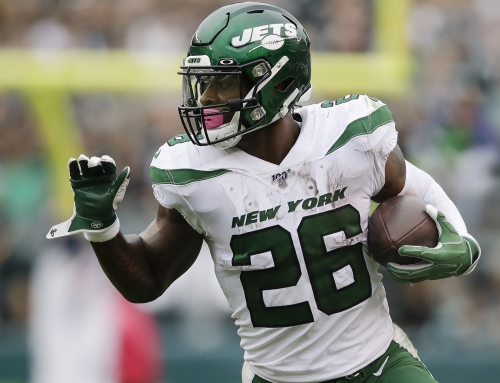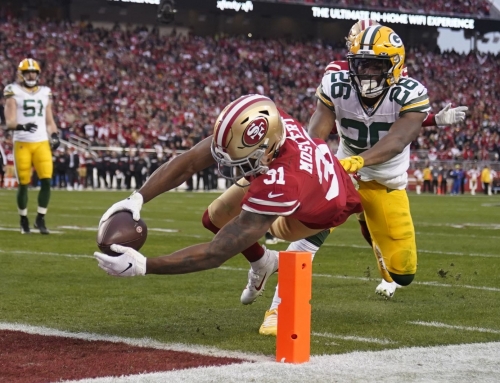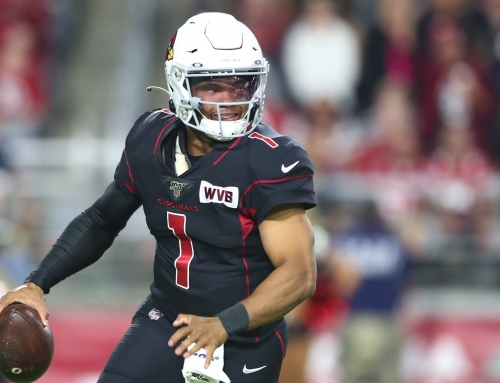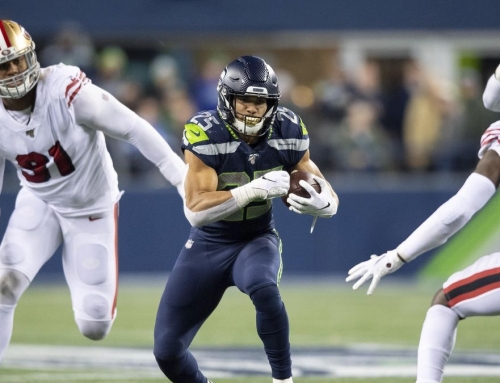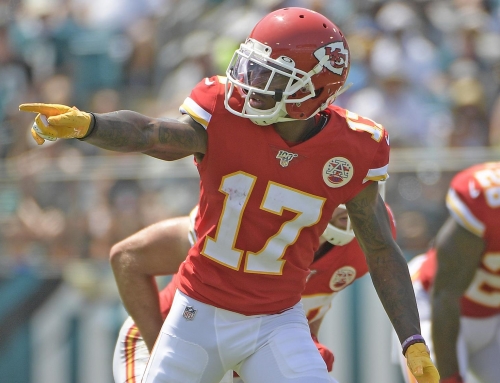Last June, I wrote this piece about selling Jarvis Landry in dynasty leagues as soon as possible. At the time, I was discussing how Josh Gordon would be the primary receiver in Cleveland and how Todd Haley’s offensive scheme prioritizes short passes to the running back, severely reducing Landry’s target share. A lot has changed for the Browns since last offseason, but one thing has not. If you held Landry through the 2018 season, you were granted a reprieve, but your window to sell Landry is closing quickly.
The Browns have a legitimate shot to win the AFC North this year, and exciting times are in store for life-long fans who’ve suffered and persevered through a decades-long rebuild. Baker Mayfield showed flashes of greatness during his rookie debut, so things were looking up for Cleveland’s offense even before the addition of superstar receiver Odell Beckham. Unfortunately, the trade for Beckham, while great for Browns fans, spells disaster for Landry’s fantasy value.
Despite some occasional temper tantrums, which appear to have been somewhat justified given the Giants’ seemingly blind loyalty to a declining Eli Manning, Beckham has no significant off-field concerns. Beckham has also been fairly healthy over the course of his career with only minor injuries outside of a broken ankle in 2017 and a quad injury late last season. And when healthy, Beckham is a superb athlete with elite physical traits and one of the best wide receivers in the league, if not the best.
Last offseason, my primary argument for selling Landry was a declining target share. While Gordon was subsequently traded to the Patriots last September, the exact same issue holds true with Beckham now as the clear top wide receiver in this offense. In fact, it could be argued that Beckham’s presence is even worse for Landry than Gordon’s was, as there were plenty of question marks about the latter’s physical fitness after such a long time away from the game as well as whether Gordon could even stay on the field due to substance-abuse concerns.
To truly project Landry’s 2019 production, we need to analyze both his and Beckham’s career thus far as well as their likely roles in this revamped Browns offense. The below graphic illustrates both receivers’ career stats and highlights a few key areas that I’ll discuss in detail.
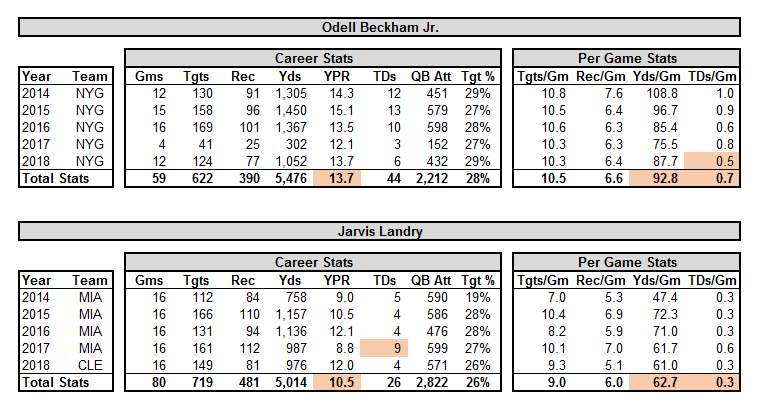
Target Share
In the first five seasons of his career, Beckham has been a target magnet for Manning. He has averaged nearly 11 targets per game and accounted for 28% of Manning’s total pass attempts since being drafted by the Giants. Over the course of Landry’s career, he’s seen a similarly high target share, first in Miami, and then again in Cleveland last year. At a glance, it would seem that Landry thrived in 2018, garnering a generous 26% target share and nearly matching his career high in yards per reception (YPR). However, his numbers with the Browns last year are misleading.
It feels like a lifetime ago, but Tyrod Taylor was Cleveland’s starting quarterback for two and a half games last season. During those first two games with Taylor under center, Landry averaged 11 targets and six receptions per game. In the Week 3 contest against the Jets, Taylor targeted Landry five times in the first quarter and a half of the game before leaving with a concussion and paving the way for the #BakerMania era in Cleveland. For the short span of his career as the Browns’ starter, Taylor targeted Landry on a whopping 32% of his pass attempts.
After Mayfield took over the game in Week 3 in his first regular season action, he targeted Landry nine times in just over 30 minutes of game play, accounting for 39% of his pass attempts in that game. But in spite of this hot start to their relationship, Mayfield targeted Landry less and less as the season continued. From Week 4 onward, Landry accounted for just 24% of Mayfield’s total pass attempts.
While Landry is a talented and productive NFL receiver in his own right, his college teammate and now NFL teammate is in a league of his own, and Beckham and Landry are very far apart when rating overall talent and fantasy potential. Beckham is the clear number one receiver in Cleveland, and anyone arguing otherwise is severely misguided. Although I don’t expect Beckham to garner a dominant 28% of the total target share as he did in New York, I do expect him to be the clear target leader with a projected 24% of Mayfield’s total pass attempts going his way in 2019.
The Browns also have a bevy of talented running backs on the roster that will demand targets. Sophomore dynamo Nick Chubb can catch despite being used primarily as a runner during his rookie season. Duke Johnson, assuming general manager John Dorsey doesn’t acquiesce to his demands for a trade, is a good runner and excellent receiving back once he gets out in space. And despite his off-field issues, Kareem Hunt is a dynamic back who can do it all once he is eligible to return in Week 9 of the season. Despite a low 13% of targets to Tampa Bay’s running backs in 2018, I expect new Browns offensive coordinator Todd Monken to utilize this trio of talented backs more than he did Peyton Barber, Ronald Jones, and Jacquizz Rodgers last year and currently project a combined 16% target share for Chubb, Johnson, and Hunt.
Then there’s David Njoku, who is a big red-zone target at 6’4 and 246 lbs. as well as a threat up the seam with his speed. He received a 15% target share in 2018, and I would expect this number to remain more or less the same for the coming season. Speedster Antonio Callaway, possession receiver Rashard Higgins, and the newly-signed Jaelen Strong figure to be mostly role players, but they too will get their fair share of looks in various game situations, combining to account for a projected 25% target share. At the end of the day, I’m projecting Landry with just an 18% target share for the 2019 season, which would be by far the lowest of his career thus far. Not all targets are created equal, however, so what kind of production can we expect from Landry with this reduced target share?
Role / Efficiency
Last year, Landry was utilized in a variety of ways as the de facto number one receiver, including both in the slot as well as outside. With Beckham now in Cleveland as the go-to guy, Landry figures to return to a predominantly slot role. The only real positive is that Landry’s catch rate should rebound from an abysmal 54% in 2018 back to around his 70% career average with his average depth of target likely to decrease in 2019.
This is where Landry excels, catching short passes to move the chains as well as creating yards after the catch. But while his increased catch percentage is good for Mayfield and the Browns offense as a whole, his yards per reception (YPR) and resultantly, his total receiving yards, will likely suffer. During his tenure in Miami, Landry averaged 10.1 YPR versus his 12.0 YPR last year in Cleveland, and I would expect his 2019 average to regress to about 10.5 YPR.
Scoring efficiency is also unlikely to improve despite the lessened coverage due to Beckham’s presence. While Beckham averaged the lowest touchdown percentage of his career in 2018, I would attribute this more to the presence of Saquon Barkley as well as Manning’s continued decline in efficiency rather than a decline in Beckham’s scoring abilities. He and Njoku figure to be Mayfield’s primary red-zone targets, and the offense is also likely to feature Chubb and Hunt in goal-line situations. Outside of his nine-touchdown season in 2017, Landry has averaged just 0.3 receiving touchdowns per game, and I would project Landry’s scoring rate to remain around the same for the coming season.
2019 Outlook
In 2018, Cleveland tied for 11th in the league in terms of total passing attempts with 574 on the season. Given the additions on both offense and defense, the Browns should lessen the amount of time spent playing from behind this year, leading to fewer passing attempts and more rushing attempts. However, I don’t expect game flow to significantly impact their passing percentage on offense, and I’m tentatively projecting Mayfield for 560 pass attempts in 2019.
Where does that leave Landry? Well, the outlook is rather bleak if my projection of an 18% target share for Landry holds true. Assuming his scoring rate of 0.3 touchdowns per game remains flat and figuring in a regression to 10.5 YPR mitigated by a return to a 70% catch rate, Landry should total around 71 catches for 741 yards and five touchdowns on 101 targets in 2019. Landry was the WR21 in PPR last year with 198 points through Week 16, whereas the prorated 15-game projection of the above totals would yield a sum of 164 PPR points, which would’ve made him the WR31 in 2018.
Barring a significant injury to Beckham, I view Landry as a fantasy WR3 or flex play going forward with his new role in the Cleveland offense. Many in the dynasty community still perceive Landry to be a fantasy WR2 with WR1 upside and value him at a price tag of an early or mid first-round rookie pick or more. I’ve seen trades in my leagues and on Twitter of Landry for players like Marlon Mack, Devonta Freeman, Allen Robinson, Chris Godwin, and Evan Engram, all of whom I value over Landry. My prediction is that Landry won’t even be worth a first-round rookie pick at all by this time next year, and I would strongly advise exploring trade options if he is currently on your dynasty roster.
For more fantasy football and dynasty content, follow me on Twitter @FFA_Meng.



